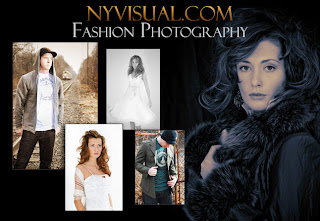With its huge audience, high pay-checks and glamorous international lifestyle, fashion photography may seem like one of the world's most sought-after professions. But for every fashion photographer who makes it through the door of a top magazine, a thousand others find their niche fashion advertising, art photography, celebrity portraiture or even paparazzi work to make a living.
Allure magazine photo editor Clio McNicholl, photo agent Gloria Cappelletti and New York fashion photographer Eva Mueller agree that breaking into the industry can be hard. But they have some tips for beginners on setting up a portfolio, submitting work to magazine picture editors, choosing the right photo agency and even getting shown in a gallery.
Setting up a portfolio
A photographer's most important tool is her portfolio, and this is particularly true for beginners who don't have an established reputation.
The images you choose to showcase in your portfolio should be thematically linked to the job you're trying to get – still-lifes or product shots if you're going for an advertising gig, for example. But also throw in one or two other images to demonstrate your range. Strong portraits are always a safe bet, as they tend to stay in the mind of the viewer.
Once you've got your portfolio together, the next challenge is to get the picture editor to use you.
Picking your picture editor
When you submit work to photo editors, remember that you're "showing" rather than "selling". Editors almost never buy the specific image they see before them; they're looking for a photographer who can execute future commissions. You'll need to be persistent in sending out your work, and ruthless in editing what you choose to show.
The best way to grab an editor's attention is to show previously published work. But there's a down-side.
When you're submitting your work, remember:
- Call the magazine ahead and get the name of the person to whose attention the submission should be marked
- Label everything with your name and telephone number
- Send working prints or transparencies, not originals
- Include a stamped, self-addressed envelope if you want the work back
Photo agencies exist to liaise with clients and sell photographers' work on their behalf. They benefit everyone from start-out photographers, who may not have many industry contacts, to seasoned professionals, who are too busy to take care of business dealings themselves.
A photo agency is not the only place that can sell your work. If you're more interested in concentrating on your personal vision than taking commercial work, you can also considering exhibiting in a fine art photography gallery.
Getting a gallery
Once derided as a scientific curiosity with no artistic value, photographs are now one of the hottest growth areas in the international fine art market.
If a gallery is interested in taking you on as an artist, they'll probably want to see a representative sampling of your work. Even if you have one or two knock-out images in your portfolio, a gallery will want to know that you have a mature body of work with a consistent standard throughout. Remember that many artists join a gallery simply by having their work go into the back-room inventory, where it will be shown to specific collectors, rather than having a public exhibition. Not everyone is offered a solo show.
The most important thing to remember about working with a gallery is to maintain a proper business relationship. Every print you give to a gallery should be inventoried by you – not them – and you should understand when and how you can expect payment in the even of a sale. Industry standard is that the artist receives 50% of the retail price of a photo.
You should also discuss whether you are free to have relationships with other galleries, or if your gallery expects exclusivity.

No comments:
Post a Comment